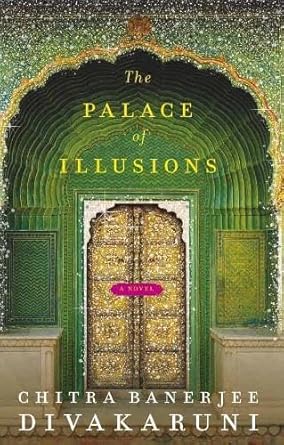Original Title
The Palace of Illusions
Subject & College
Series
Publisher, Place
ISBN 13
978-0486290300
Format
Paperback
Language
English
Readers Feedback
The Palace of Illusions
The Palace of Illusions: Book Review The Palace of Illusions by Chitra Banerjee Divakaruni is a historical fiction that reimagines the epic of Mahabharata through...Read More
Chitra Singh
The Palace of Illusions
The Palace of Illusions: Book Review
The Palace of Illusions by Chitra Banerjee Divakaruni is a historical fiction that reimagines the epic of Mahabharata through the eyes of Draupadi. Mahabharata on its own is a masterfully woven thread of complex realities on the greatest war ever fought in the history of Bharata. However, in this work of art, the author has taken her creative liberty to the next level and related the ideas of the contemporary world. For instance the ideal of feminism, and shown how it has always existed in the minds of women as a concept for centuries, discarding the age old patriarchy, even the privileged ones, through the thoughts of Draupadi or Panchali, the daughter of King Drupada. On the face of it, the work appears to be yet another retelling of the historical epic of Mahabharata but be rest assured it has to offer one of the most breathtaking and a distinct take on it. This book serves to be a timeless piece of literature.
The book opens up with the birth of Draupadi from the sacred fire, along with her brother Dhrishtadyumna, however, the former is given no importance and is cast aside as an unfavourable by-product. Further, it moves ahead to pave the road for character development through every stepping stone in her way, carving the meek soul of a young girl into the tough heart of a woman who has always been betrayed. Draupadi never experienced childhood and was immediately forced into the duties of adulthood, as the author rightfully describes, “she who sows vengeance must reap its bloody fruit.”
The relationship that she shares with her siblings, Dhrishtadyumna and Shrikhandi, has been the only source of unconditional love and strength to her, the author has portrayed this bond in the most non maligned bliss of purity.
Personally, the irresistible bond of Draupadi and Krishna, is an absolute delight to witness. The mystery man Krishna, who calls Draupadi by the name, ‘Krishnaa’, his presence is omnipresent. It is even more striking how the author left it to the readers to decipher this mystery of Krishna and how in his presence, Panchaali could be her own self.
The Palace of Illusions is the dream palace of Draupadi made by the magical forces, it is the only place she found herself to actually fit it, a palace that she resides in after the immense hardships of an unusual marriage with her five husbands.
Idiosyncrasies that surround the life of Panchali are myriad, the most contented is her secret admiration of Karna, another dilemma of her life.
The author, Chitra Banerjee Divakaruni has effortlessly put this realisation in the minds of the reader, that owes its quality to the minds of the female protagonist. The only difference that persists in the present is the tendency of the suppressed gender to voice their opinion and the confidence to live life according to their terms no matter what the other voices around them have to say. We see how Panchali, despite being a princess, is cast out from her own palace and its workings, labelling her as a curse that will change the future and history forever. She is ‘warned’ three times through her visions and Guru Vyasa to not seek the truth of her existence, and yet she was as stubborn as a mule to do things on her own terms, exasperating the readers through her actions at times. Which underlines a delicate aspect of humanity that strives to go against all odds in order to satisfy self, an indication that women can be selfish too for their lives and they might make mistakes but mistakes that would not carry the guilt of an entire generation.
Ms. Divakaruni did an amazing job in balancing the traditional ethics of the epic with the contemporary values of modern society, which would definitely have become a source of dispute for the sensitive masses if done otherwise.
The mannerism in which each character portrays an identity so inherently rooted to their upbringing and the values of empathy ascribed in the parts of their behaviour proves to showcase the intricacy that the author dealt with by putting herself in the shoes of the characters, especially Draupadi. While reading, this delightfully imaginative piece takes the readers back to the era, where we can feel it happening around us and for a moment we become ‘Sanjay’, the one who dictated the whole epic to the blind King of Kauravas, ‘Dhritarashtra’.
However, if there was an involvement of the said contemporary ideals incorporated through the thoughts and feelings of other female characters like Subhadra, Kunti and even Gandhari among others, more networks of thoughts could be explored and a wide array of perceptions owing to identity, gender roles and the realisation of self could be explored. The unanticipated ending establishes comfort to the readers when they get to know that one of the major dilemmas of Panchali’s life stands true to her thought.
Overall, the book is an immaculate version of Mahabharata, and a must read for the lovers of historical fiction out there.

